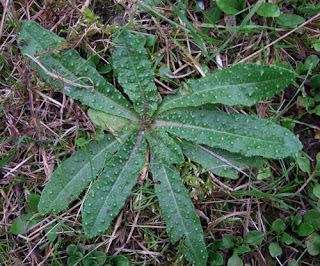Common name: Bristly Ox Tongue
Botanical name: Picris echioides
Family: Asteraceae
Life cycle: Annual or Biennial
Habitat: Bristly ox tongue is very common on waste areas, grassland and occasionally on lawns. In turf it forms as a lowing growing rosette type weed and will grow in most types of soil.
Leaf: The narrow lanceolate leaves are covered in swollen pimples of bristles (hence the name of this plant).
Flower: Bristly ox tongue produces multiple dandelion like flowers. The yellow flowers can be seen between June and September.
Removal & control: Individual plants can be removed by hand. Encourage a healthy lawn with adequate feeding and good lawn care practices.
A selective weed killer can be used, however a second treatment may be needed for complete control.
Botanical name: Picris echioides
Family: Asteraceae
Life cycle: Annual or Biennial
Habitat: Bristly ox tongue is very common on waste areas, grassland and occasionally on lawns. In turf it forms as a lowing growing rosette type weed and will grow in most types of soil.
Leaf: The narrow lanceolate leaves are covered in swollen pimples of bristles (hence the name of this plant).
Flower: Bristly ox tongue produces multiple dandelion like flowers. The yellow flowers can be seen between June and September.
Removal & control: Individual plants can be removed by hand. Encourage a healthy lawn with adequate feeding and good lawn care practices.
A selective weed killer can be used, however a second treatment may be needed for complete control.


 12:03
12:03
 Simon
Simon












0 comments:
Post a Comment